Built around the beginning of the 19th century under the reign of King Gia Long, after more than 200 years, until now, Hanoi Flag Tower (also known as Ky Dai) on Dien Bien Phu Street (Ba Dinh, Hanoi ) is a testament to the heroic imprints of Thang Long - Hanoi , a sacred symbol, representing the will of independence and autonomy of the Vietnamese people.
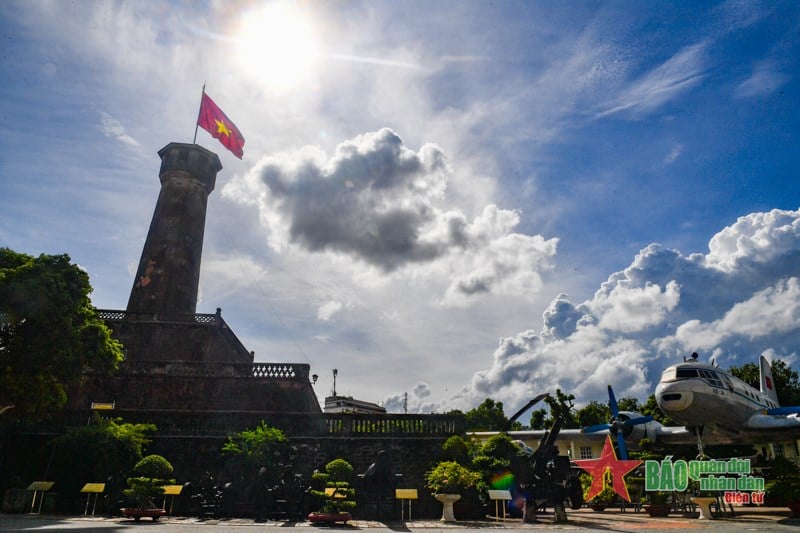 |
| The Hanoi Flag Tower was built in 1805 and completed in 1812 under the Nguyen Dynasty. Located entirely within the grounds of the Vietnam Military History Museum, this is one of the few architectural works that remained intact, fortunately not destroyed by the French colonial government and war bombs. |
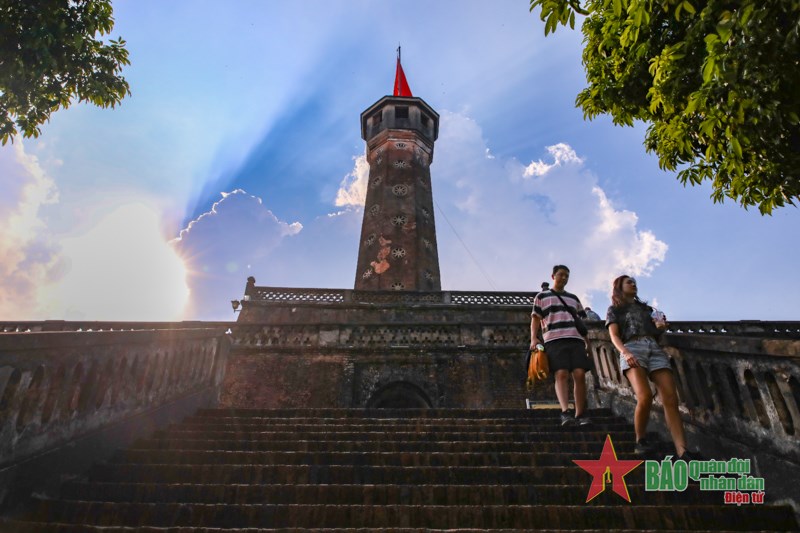 |
| The perimeter of the flagpole is 180m. The total height of the construction is over 33m, including the steel flagpole, it is over 40m. The flagpole has two functions: to hang the flag and to act as an observation tower. |
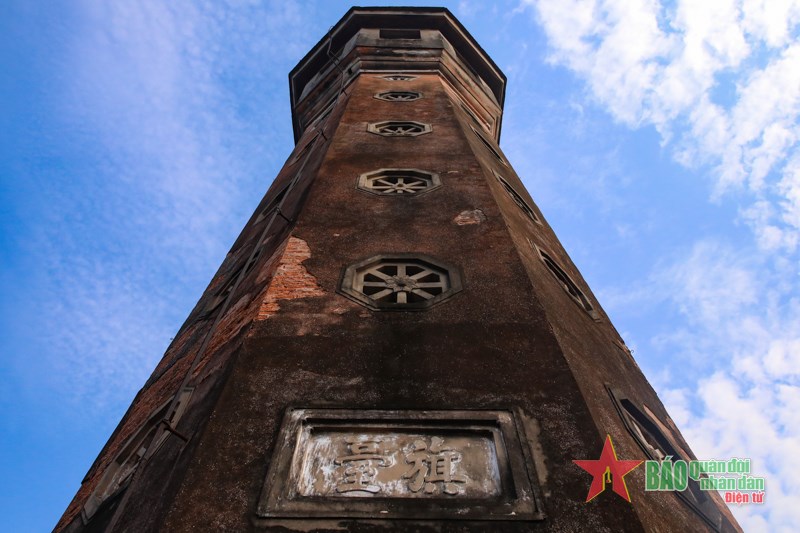 |
| The structure of the flagpole consists of 3 parts: the base, the column body and the watchtower. The base has 3 floors, gradually higher from the bottom up and also smaller from the bottom up. The column body has decorative patterns and ventilation holes, providing light for the column body. The watchtower has 8 windows overlooking the 4 directions of Hanoi city. There are 105 stairs to go from bottom to top. |
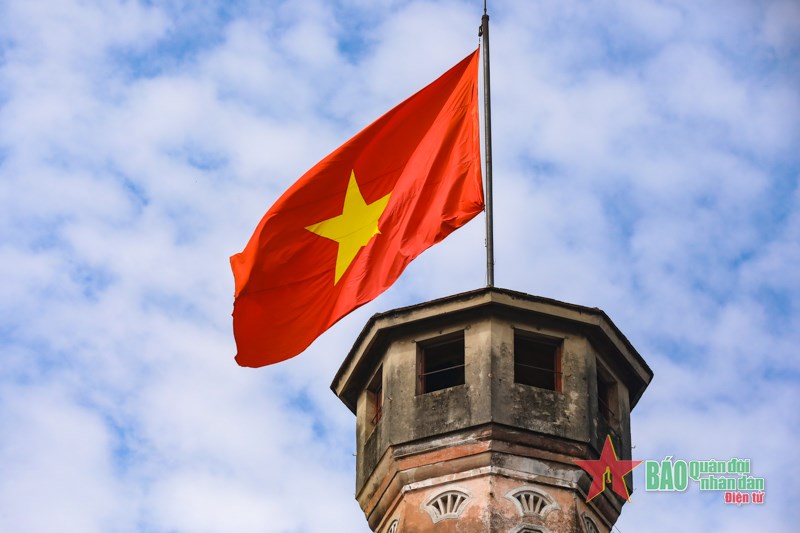 |
| The top of the flagpole is made into an octagonal tower, 3.3m high. In the middle of the tower is a round pillar, 0.4m in diameter, reaching to the top of the tower, which is the place to plant the flagpole (8m high). The roof is shaped like a conical hat, the roof frame is made of reinforced concrete, covered with tiles and in the middle of the roof there is an iron pillar with a pulley to hang the flag, which is also a lightning rod for the project. Under the Nguyen Dynasty, during holidays and Tet, the yellow flag of the court was often hung on the top. The flagpole was also the place where the king and mandarins reviewed the military and martial arts competitions. |
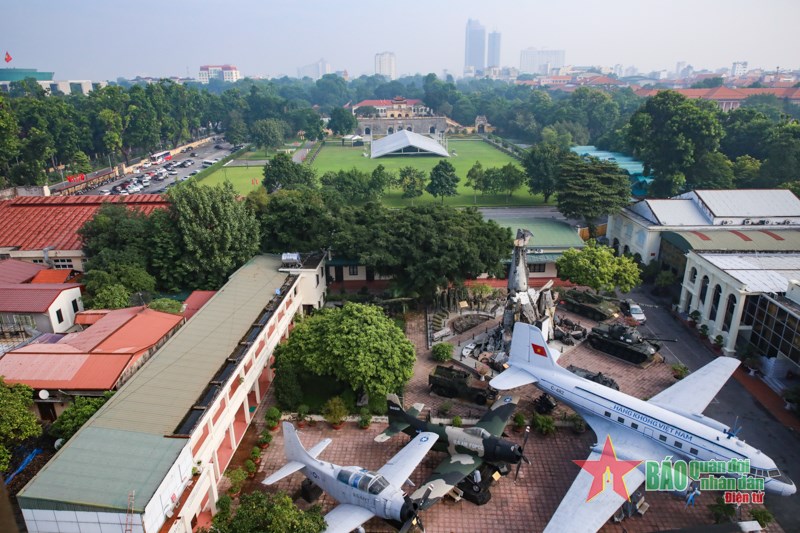 |
| From the height of the Flag Tower, visitors can enjoy a panoramic view of today's Hanoi and find traces of ancient Thang Long with many ancient relics to the North such as Doan Mon Gate, Princess Tower, and North Gate; to the East is the Post Office reflecting on the historic Hoan Kiem Lake; to the West is Ba Dinh Square, Ho Chi Minh Mausoleum and Museum ; and to the South is an open space with many typical architectures. |
 |
| At the north door, two staircases are arranged to the terrace on the right and left. Each staircase has 14 steps, with iron handrails. |
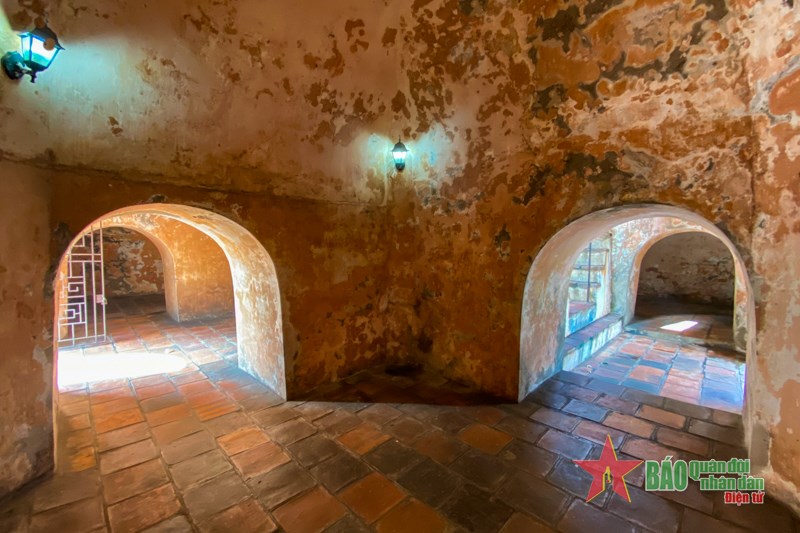 |
| On the East door, there are two embossed Chinese characters “Nghênh hữuc”, which means welcoming the morning light; on the West arch door, there are characters “Hội quang”, which means reflecting light; on the South arch door, there are characters “Hương minh”, which means facing a bright place; only the North door has no characters. |
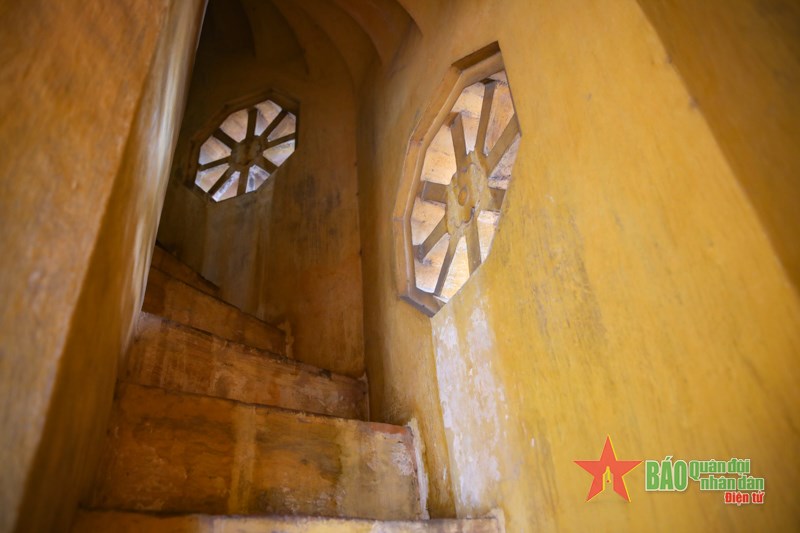 |
| The body of the flagpole has a spiral staircase of 54 steps leading to the top. Along the spiral staircase leading up to the flagpole, there are ventilation holes for light and air. There are a total of 39 flower-shaped holes and 6 fan-shaped holes. |
 |
| The plaque inside the Flagpole shows the time the construction was completed under King Gia Long, Nguyen Dynasty on the southern part of Thang Long Imperial Citadel. |
 |
| Overall, the Hanoi Flag Tower has a 3-storey square brick structure in the "upper fall lower challenge" style, consisting of prisms stacked on top of each other in a balanced, sturdy, and stable layout. |
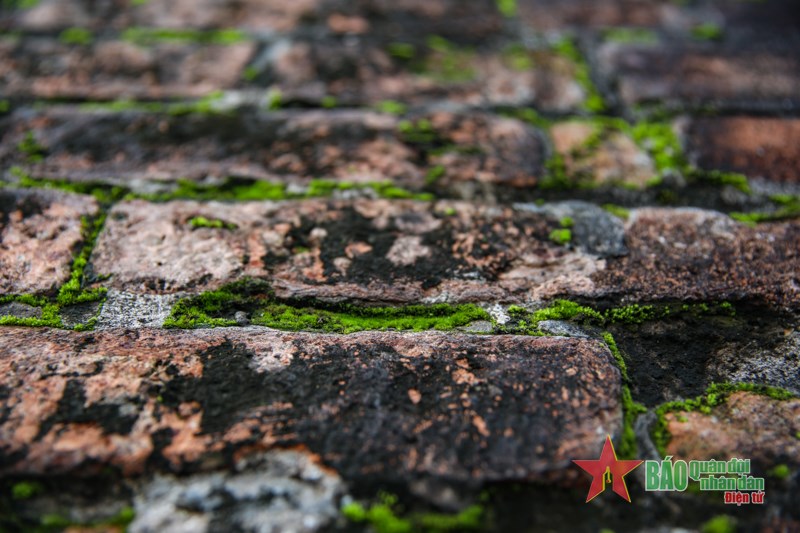 |
| The brick wall of the Flag Tower is covered with moss over time. In 1873, a battle to protect the Flag Tower took place between the royal soldiers and the French soldiers. The second time was in 1882, when the French occupied this place and used it as a military base for a communications camp. Until 1954, when the capital was liberated, the red flag with a yellow star flew for the first time on top of the tower. Since then, the Flag Tower has regularly flown the national flag. |
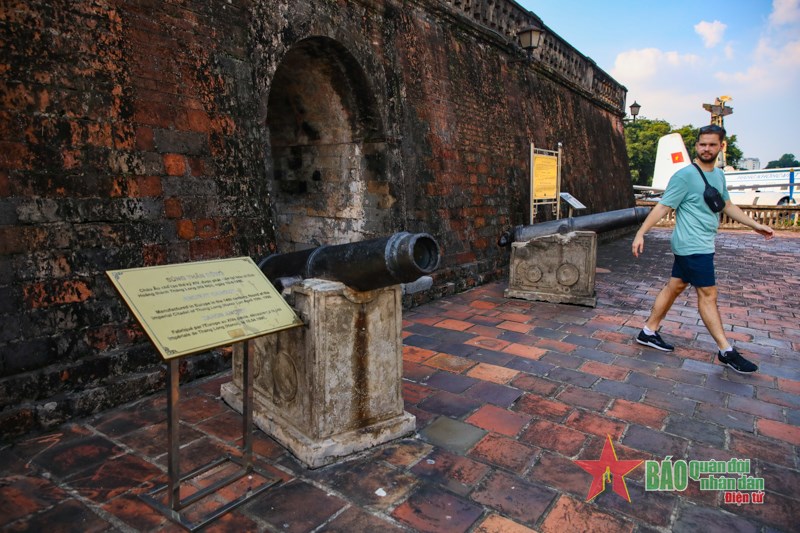 |
| On the occasion of the 10th anniversary of the historic Dien Bien Phu victory, at 5:30 p.m. on May 7, 1964, Hanoi City solemnly held a ceremony to place a signboard and change the name of Cot Co Street to Dien Bien Phu Street. On January 20, 1989, the Ministry of Culture and Information issued a decision to recognize Cot Co as a national historical and cultural relic. |
 |
After more than 200 years of history, overcoming all the harshness of nature and the destruction of war, Hanoi Flag Tower still stands tall carrying the national flag, symbolizing the will of independence and autonomy of the Vietnamese people. |
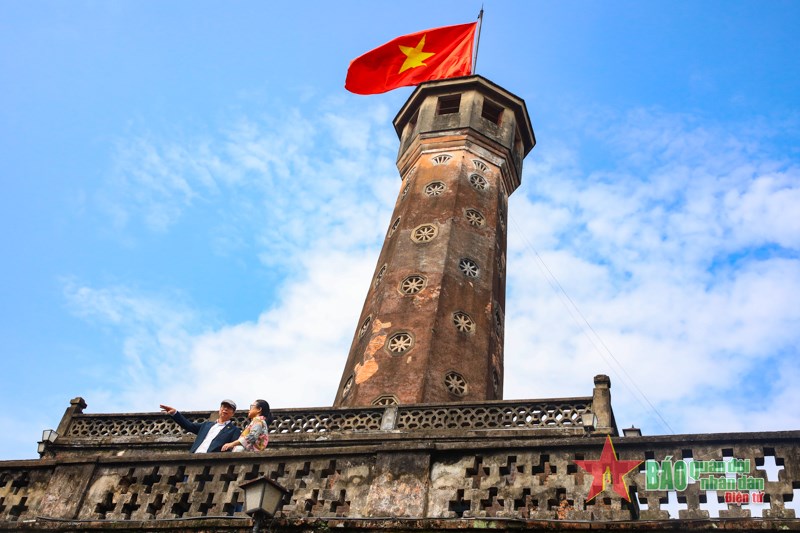 |
| Nowadays, Hanoi Flag Tower is always a familiar tourist destination for visitors. On holidays, April 30, May 1 or National Day September 2, visitors often have to queue and the campus of the Vietnam Military History Museum is crowded. |
Source: https://www.qdnd.vn/van-hoa/doi-song/ky-dai-hon-200-nam-tuoi-o-thu-do-bieu-tuong-hung-thieng-cua-ha-noi-707579
























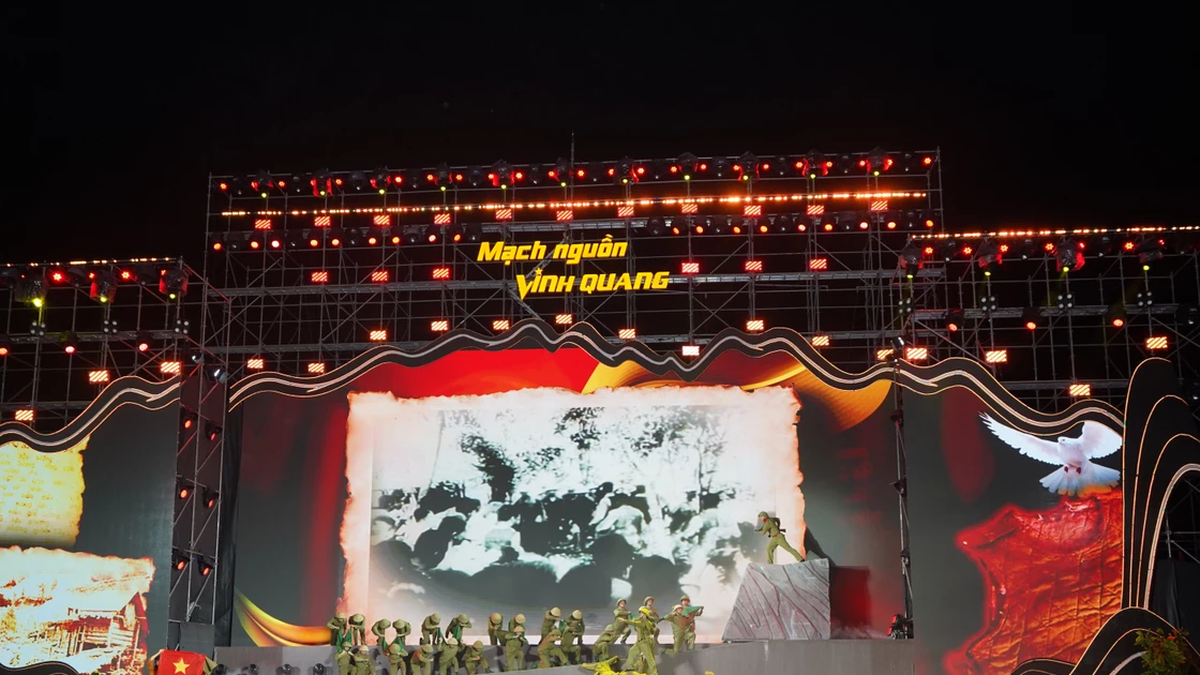
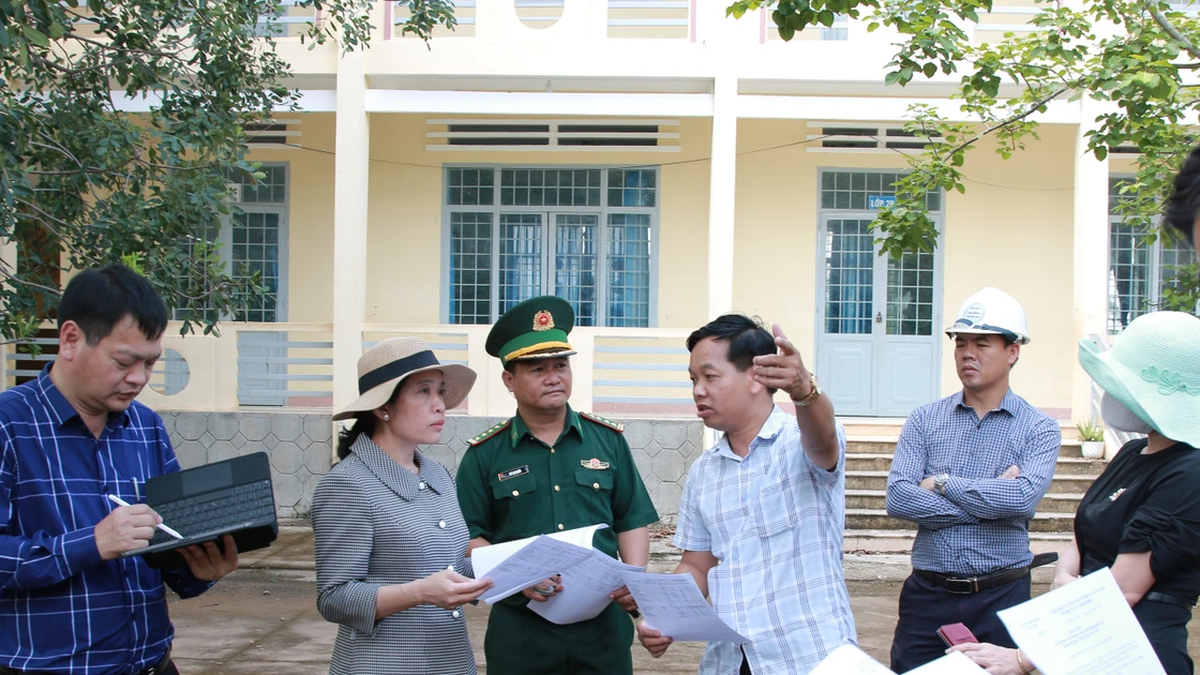


















































































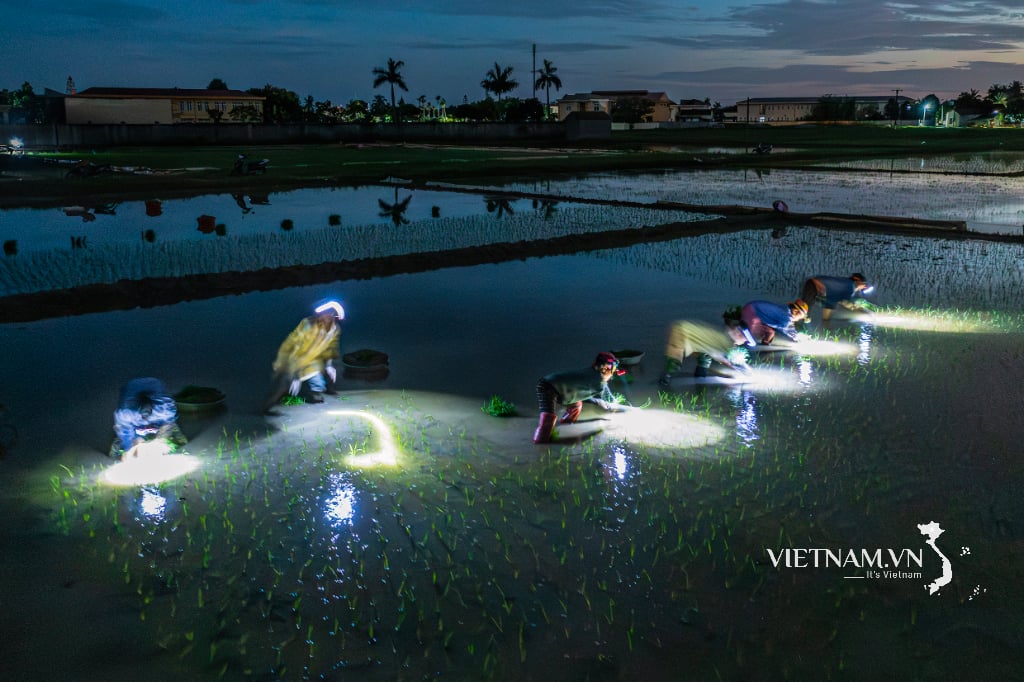



Comment (0)